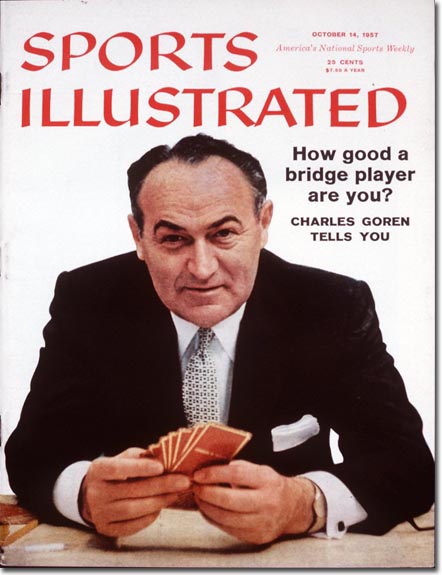Toledo Blade – 16 Oct 1966

Opening lead : ![]() 3
3
Successful defense almost invariably depends on a sound analysis early in the play. East’s key diagnosis at trick three in todays hand enabled him to prevent the declarer from running off with a vulnerable game contract. The bidding requires little comment, North has only nine high card points and, with a singleton in partner’s opening bid, his hand does not warrant a response at the two level. When South rebid two hearts; however, North’s holding revalued to the equivalent of an opening bid in support, so that his raise to four hearts was fully justified.
West opened the three of diamonds and East quickly ran off the first two tricks in the suit. With the dummy now void of diamonds, the routine return would be a low spade up to North’s weakness, but East paused to reflect before making his next play. Even if his partner held the ace of spades, it was highly unlikely that he could ever be deprived of that trick and in any event, that would only add up to the defensive hook.
The best chance to defeat the contract appeared to hinge on preventing South from establishing dummy’s club holding, in which case it was necessary to attack North’s side entries at once. With this view in mind, East returned a high diamond to force dummy to ruff.
South led a small heart to the queen in his hand in order to play his singleton club. West put up the ace of clubs and shifted to a spade, putting the declarer in his hand once more. There was only one entry left to the dummy, and even though the club suit split out there was no way to get over to the North hand once it was established. In the end, the declarer was obliged to submit to a one trick set.
Had East woodenly returned a spade at trick three, South would have had time to start development of the club suit while North still retained two cards of entry, the king of hearts and the fourth trump. It was vitally essential to drive out one of dummys entries, before declarer began working on the clubs.
